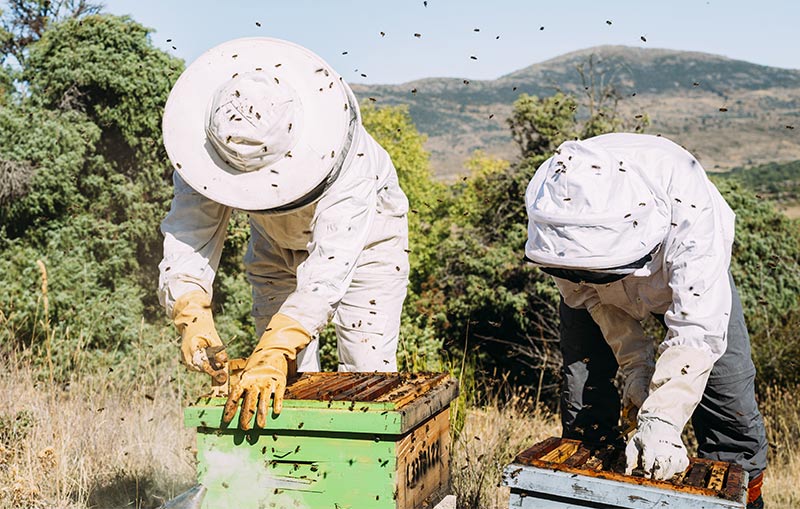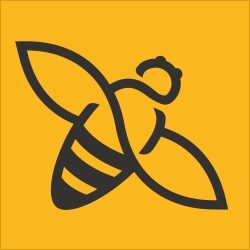BEE HIVE MONITORING
In February, all hives are active. It doesn’t matter if it’s hot or cold. Bees with sunlight. The brood is still small and the bees precisely regulate the size of the brood body so that they can maintain it. During the month of February, the queen lays up to 4,000 eggs, from which a new generation of bees will gradually hatch. If the outside temperature rises to more than 8°C, you can look at the size of the arc of brood. Ignore the outdated opinions of beekeepers that it will hurt the bees. The strong bee colony, that you have chosen to observe can handle it. Carefully select the middle frame of the bee cluster, brush off the bees and you will see the brood up to 10 x 10 cm in size.

“Honeybee”

“Beekeepers”
Watch out for the queen! Carefully put the frame back in, absolutely exactly in the direction in which you selected it, otherwise the bees and the brood will become cold and die. This brood does not mean that the bees have won. Such a small arc of brood is a far from enough to increase the number of bees in the hive. These first bees are important when replacing winter bees, which are slowly coming to an end. Extensive brooding occurs only a month after the bees carry pollen from the first plants, such as hazelnuts, willows and fruit trees. In February, it is already clear how many beehives survived the winter. The beekeeper should prepare everything necessary for the expansion of hives and for the restoration of foundation, frames, hives, or other parts of the apiary. There will be no time for that during march and April and retailers will not have everything in stock.
“The healthier your bees are, the more honey they will bring during the year. It is true that you will not do much in February.“
As you wintered your bees, they will thrive this year. You can easily tell if your bees are healthy, because on a nice warm day they will definitely fly out of the hive in large groups to empty their feaces. I am already impatient during February and always on a warm sunny day at 10°C I go to the hives and look more closely at the flight boards. It can tell a lot. If the bees don’t fly out of the hive, it doesn’t have to be a disaster. Each hive behaves a little differently. It is also important whether the hive is in a sunny place or in the shade, whether it is insulated or not, and whether the bee colony is very strong or weaker.
